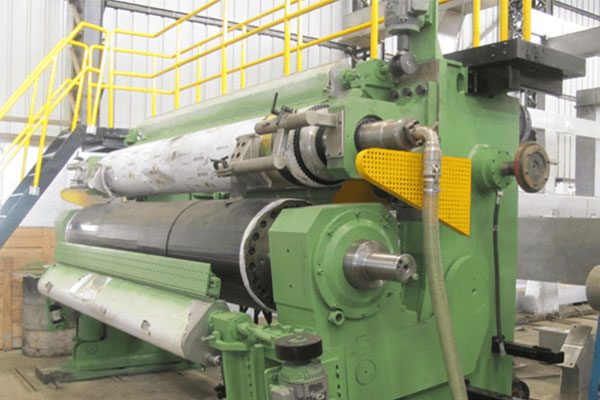Faced with the tight delivery deadlines of overseas customers, how can companies ensure that their equipment can be exported smoothly? Take the calender as an example. As an important industrial equipment, this product is in great demand in the global market. This article will use the real case of exporting a calender from Shanghai to Italy to show the difficulties and key points that may be encountered, and provide suggestions on export procedures and customs clearance procedures.

1. The process of exporting calenders to Italy
The export process usually involves a series of complex steps, and ensuring compliance and efficiency is crucial. Below is the detailed process of exporting calenders to Italy:
1. SignExport agentAgreement to confirm customs code:First, the exporter signs a contract with the agent.Export agentThe agreement clarifies the rights and obligations of both parties. Subsequently, the enterprise needs to provide product information to the agent to determine the corresponding customs code, which is the basis for ensuring the correct declaration of tariffs and completion of customs formalities.
2. Delivery from the factory to Italy:After the products are shipped from the factory, the next step is booking a space and arranging a car to load the container. After that, the agent will conduct inspection and customs clearance. After customs clearance, the products can be shipped out of the port. After arriving in Italy, import customs clearance and tax inspection are required. Finally, the products are released and arranged for domestic delivery.
2. Case of comprehensive agency service
Take a Chinese-made calender machine exported to Italy as an example, which can provide specific insights. The product details are as follows:
? Product code: 8420100001
? Product Name: Calender
? Most-Favoured-Nation Rate: 16%
? Unit of measurement: Unit/kg
? Regulatory conditions: No special requirements
? Origin: China
? Export Port: Shanghai Port
? Trade method: International shipping
The customs declaration procedures during the export process include packing list, invoice, contract and customs declaration and inspection letter of entrustment, etc. At the same time, the customs declaration elements must be detailed, including product name, purpose, brand, model, etc., to ensure the consistency of all information.
However, during the export process, the case encountered several difficulties, including: factory holidays, difficulty in arranging vehicles, difficulty in booking space, etc. Ultimately, these factors led to export delays, and the goods arrived in Italy 20 days later than expected, missing the customer's final delivery date.
3. Difficulties and key points in the export process
From the above cases, we can extract several key lessons:
1. Time management:Preparations before exporting should be done in advance, especially at the end of the year or before holidays. Arranging large ships directly from major ports can reduce the time for transshipment and waiting. Delivery delays are the last thing a company wants to see, especially in international trade, as it is directly related to the company's reputation and customer satisfaction.
2. Cargo tracking and management:Make sure all export documents are accurate and track the shipment status so you can respond quickly if there are any issues. Even if you have done all the best work, delays in shipping can make all your efforts go to waste.
3. Communicate with customers:Communicate changes in delivery time with customers in a timely manner to avoid unnecessary economic losses and reputation issues due to miscommunication.
4. Choose a reliable logistics partner:Choosing an experienced and reliable logistics company can effectively reduce unexpected situations during transportation.
Export trade is a complex process involving multiple knowledge and skills. Through the above process and case analysis of the calender export to Italy, we can see that detail management, time planning and effective communication are the key factors to ensure export success.


 Follow customer service WeChat
Follow customer service WeChat